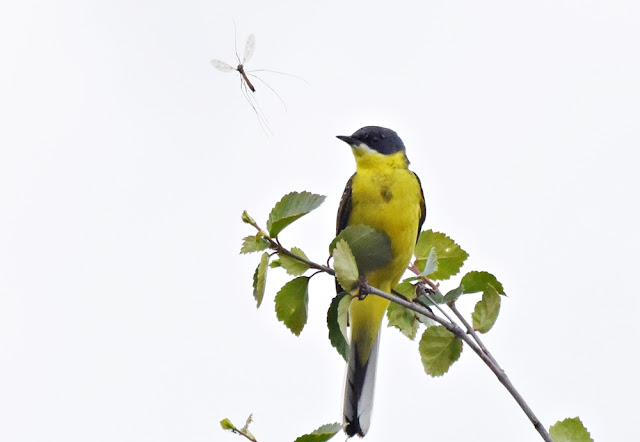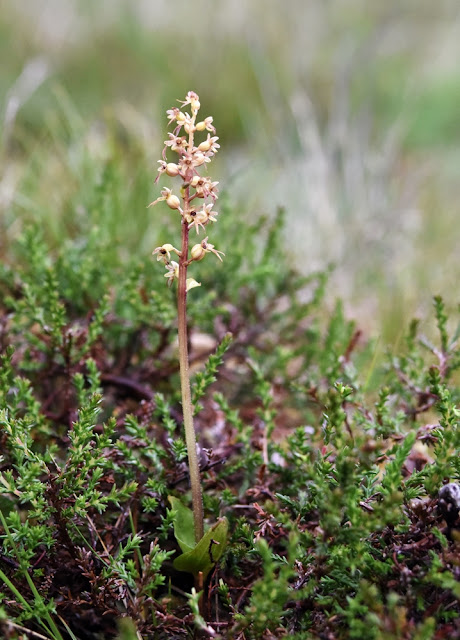 |
| A pair of Six-spot Burnet Moths Zygaena filipendulae on the stem a red-campion flower with the empty cocoon of the female below |
My initial reason for the trip was to spend a while watching the seabirds, so I headed out to some of the best viewpoints I know to see the kittiwake chicks which were quite large and would soon be fledging. Most of the guillemot chicks had left their ledges, but there were still some about as well as razorbills, shags and herring gulls. The fulmars were not long hatched so they will be on their nest ledges for months yet.
However, it was while walking between viewpoints that I noticed the flutter of activity along the cliff-top. There were butterflies and moths flitting all across the grassland and heath. The cliff-tops around the coast of Britain hold some of the least disturbed habitats in the country, for they are seldom grazed, and wild flowers thrive there. I shifted my attention.
 |
| The female on the left - her wings are still not fully unfolded after emerging |
The most abundant species were Six-spotted Burnet Moths. The adult males had already emerged and were patrolling over the grasses and herbs for females. These were only just emerging that day, probably under the influence of the hot sunshine. The males detect them by scent and there were clusters of males in some places, swarming over single females as they emerged from their cocoons. Once one male had coupled with a female, the others seemed to accept they had lost their chance to mate with her and went away to seek another. One female had been found by a male before she had fully emerged and the two moths lay attached as she slowly pulled out of her cocoon and extended her wings.
 |
| A frenzy of males swarm over the source of a female's scent |
There was plenty bird's-foot trefoil about, so once their eggs were fertilised, the females would lay their eggs on the leaves of this favourite food plant of the caterpillars.
 |
| A male couples with a female before she has fully emerged from her cocoon |
While the Burnet moths were colonial, the butterflies were mostly single, with males chasing away any intruders of their species, or even those of other species. While at the same time trying to attract and mate with any females that came through their territory.
 |
| The herb-rich clifftop grasslands |
Meadow Brown butterflies were the most common in the grasses, because the caterpillars feed on various grasses. However, although there were lots of them about, whenever I tried to follow any to photograph, they would wander over a large area then dip into the sward, fold their wings and disappear in the strong shadows. It was easier to stay still, wait til they landed beside me and then take a photograph.
 |
| A male Meadow Brown Maniola jurtina |
The females were especially elusive, skulking in the tallest vegetation, safe from predators. Although there were few passerines about that would have taken them; mostly meadow and rock pipits and they prefer to hunt on short sward and generally eat small insects.
 |
| A female Meadow Brown |
The male Common Blues were the most defensive of their territories and quickly chased off the large Browns as soon as they appeared on their patch.
 |
| A male common Blue Polyommatus icarus |
The adult Blues were feeding on bird's-foot trefoil and clover, both of which are also food plants for their caterpillars. So all in all, the rich flora on the cliff-top with the abundant grasses, trefoil and clover was clearly a good habitat for the moths and butterflies.
Sea-cliffs are always great to visit for wildlife, but on that warm sunny day it was especially worth exploring. The seabirds were still on the cliffs, busy as ever, and the lepidoptera were busy on the tops. Let's hope these little sanctuaries never get destroyed,
 |
| A female Common Blue |













































